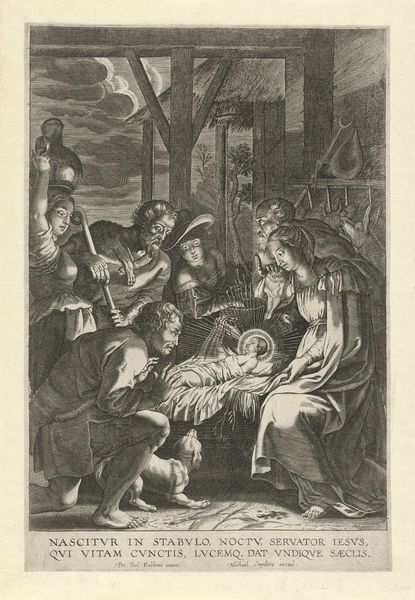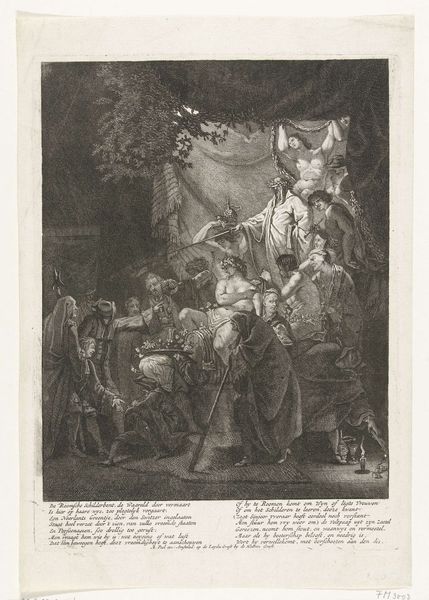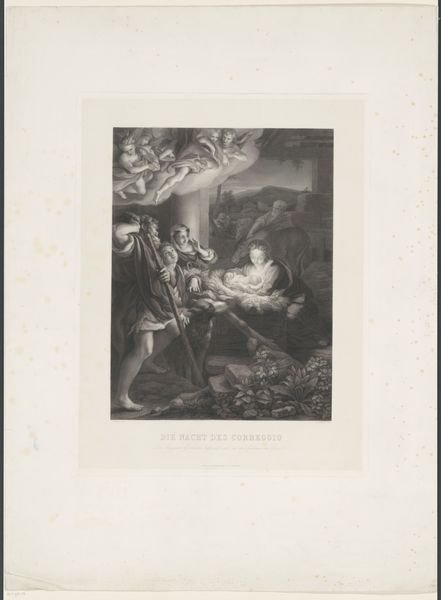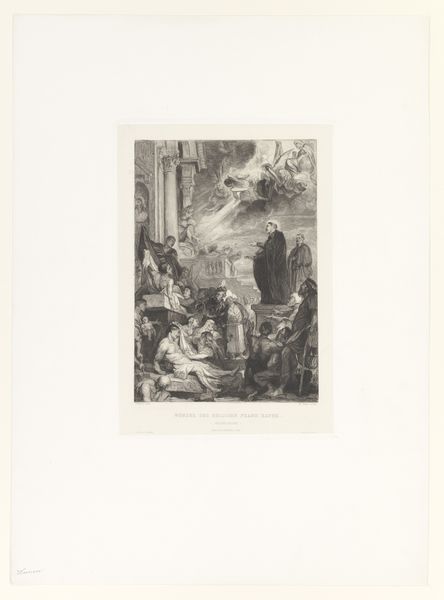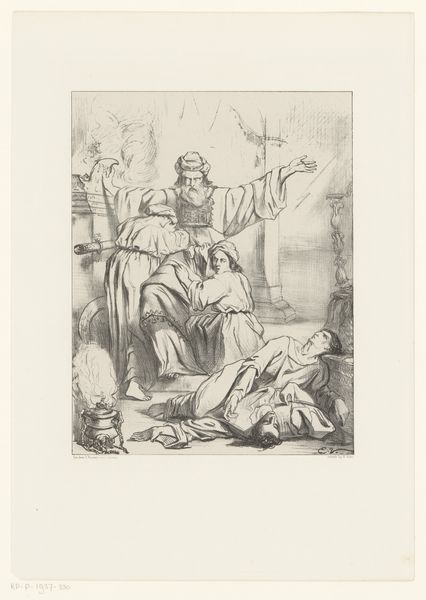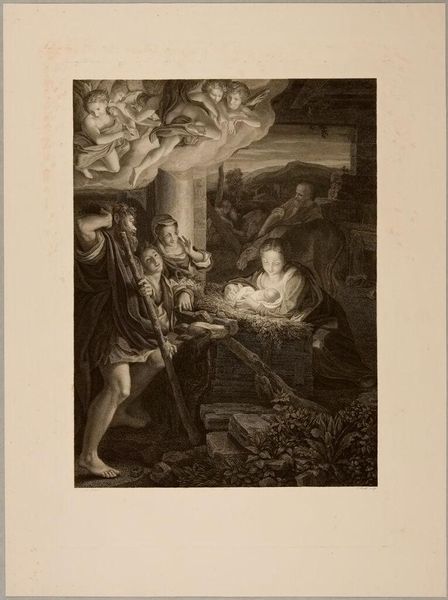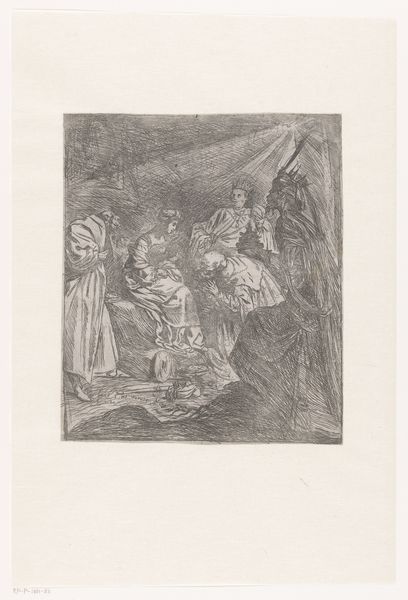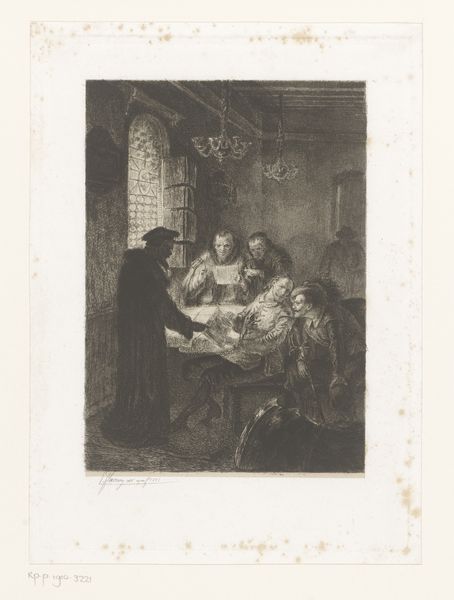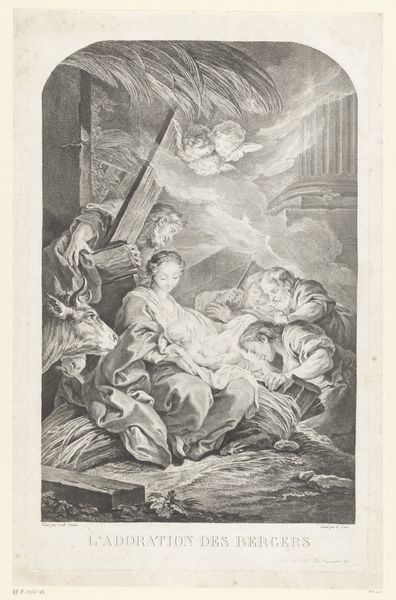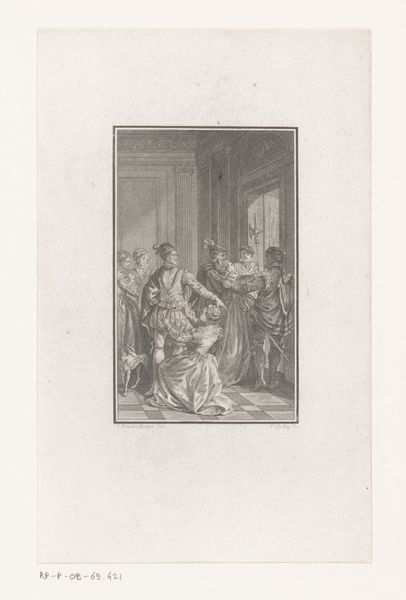
Dimensions: height 900 mm, width 658 mm
Copyright: Rijks Museum: Open Domain
Editor: This print, “Adoration of the Shepherds,” after Correggio, dates from between 1844 and 1906, and it’s quite striking in person. The way the light emanates from the Christ child immediately draws your eye. How do you interpret the symbolic weight of that light in this particular scene? Curator: The light, achieved through the engraving technique and masterful use of chiaroscuro, represents much more than illumination. Consider the long history of light as a symbol, Editor. Light traditionally represents divinity, truth, and knowledge. What emotions does that visual language evoke in the viewer, particularly when contrasted against the deep shadows? Editor: It’s such a strong contrast; I immediately think of hope emerging from darkness, a very traditional message. It’s interesting, though, to see it reinterpreted in print. Does that change its meaning, shifting it away from the more sacred space of painting? Curator: Not necessarily. Prints allowed for wider dissemination of imagery. The engraver, Gustav Eilers, aimed to share a narrative imbued with rich symbolic language with a broader audience. Think about how replicating this composition democratizes a particular visual message: Who do you believe gains access to that sacred symbolism as a result? Editor: That makes sense; it makes the message more accessible to everyday people. It's not just for the wealthy or those who can visit a specific church or palace. I hadn't thought about that aspect. Curator: Exactly. Now, notice how the figures around Jesus all react to this light. Their gestures, their gazes, speak volumes about their individual relationships to the divine. Do any specific details stand out to you? What do they tell you? Editor: I think I see how understanding the history of these symbols adds such a crucial layer of interpretation. It really brings a deeper resonance to the work. Thanks so much! Curator: Indeed. Understanding the symbolic language in artworks lets us examine a culture's hopes and beliefs, adding context and texture to our experience of history.
Comments
No comments
Be the first to comment and join the conversation on the ultimate creative platform.

